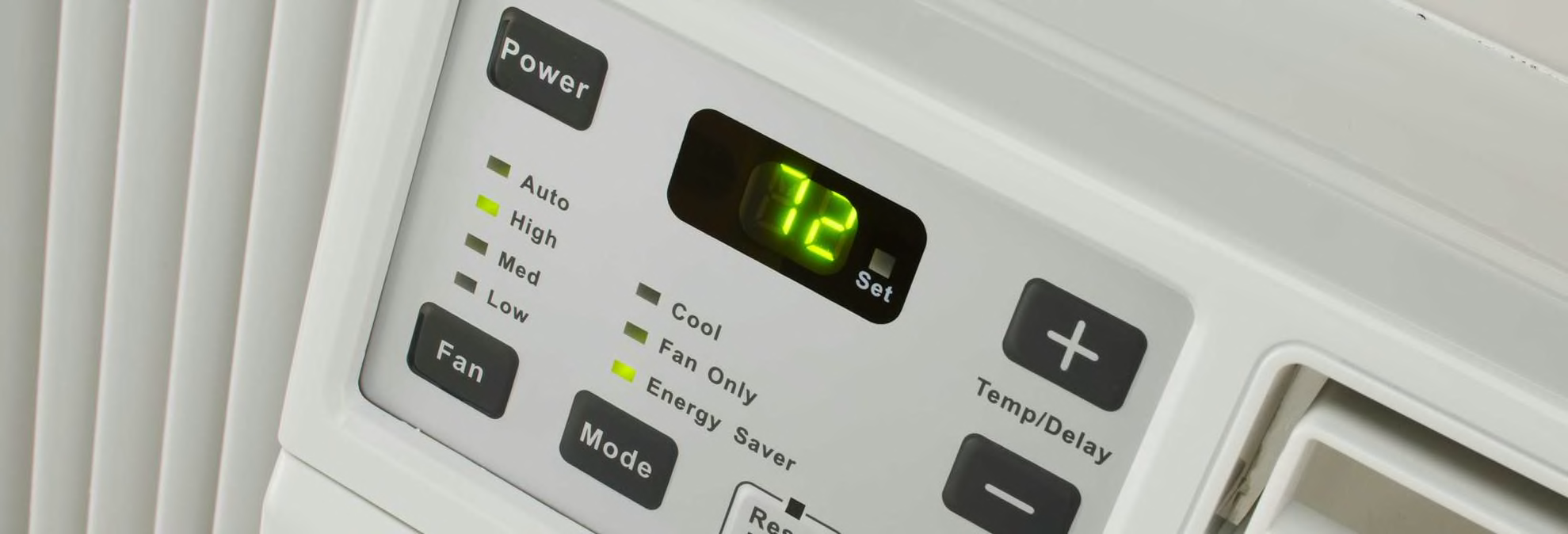
Air Conditioner Buying Guide

Senior Home & Tech Writer

Senior Home & Tech Writer
As the weather heats up, our thoughts turn to chilling out. If your home doesn’t have central AC, window air conditioners remain one of the least expensive ways to cool things down while keeping energy use in check.
But it’s important to choose the right unit. An air conditioner that’s too small will struggle to cool a room, while one that’s too big can drop the temperature so quickly that it doesn’t remove enough moisture from the air, leaving you with a cold, clammy space. And with electricity rates on the rise, energy efficiency is more important than ever. A typical household spends about 13 percent of its annual utility bill on cooling, according to Energy Star.
Here’s how to pick the right unit for your space; tips on features, installation, and maintenance; and info on how we test all the models in our ratings.
Sizing Up Your Options
Before you compare prices or features, figure out how much cooling power you need. Room air conditioner capacity is measured in British thermal units (Btu), and the bigger the room, the more Btu you need.
To calculate the square footage of your room, multiply the length by the width.
- 100 to 250 square feet (small bedroom or office): 5,000 to 6,500 Btu
- 250 to 350 square feet (larger bedroom or playroom): 7,000 to 8,500 Btu
- 350 to 550 square feet (living room or open-plan space): 9,800 to 12,500 Btu
The window units we test range from 5,000 to 12,500 Btu.
Energy Star recommends fine-tuning your Btu estimate based on the following:
- Heavily shaded room: Reduce capacity by 10 percent.
- Extra sunny room: Increase capacity by 10 percent.
- More than two people in the room regularly: Add 600 Btu for each additional person.
- Kitchen use: Add 4,000 Btu.
Also consider ceiling height, insulation, and whether your windows and doors are drafty or well-sealed.
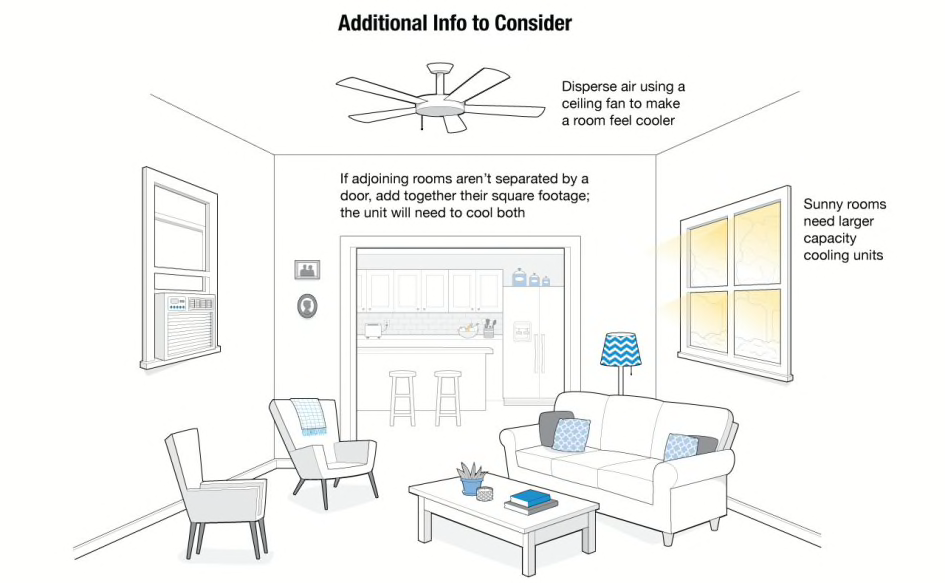
Features to Consider
Energy Efficiency: Almost all new models meet the latest Energy Star requirements, but look for units labeled Energy Star Most Efficient for maximum savings. Many models include better insulation and tighter-sealing installation kits, which help keep cool air inside.
U-Shaped and Inverted U-Shaped Units: Air conditioners with these designs have grown more common since 2022, and they consistently rank among the quietest window units in our tests.
- U-shaped models allow the window sash to slide into a slot in the unit, effectively insulating you from not only the outside heat, but also the noise coming from the compressor.
- Inverted U-shaped models drape over the sill and block less light—ideal for rooms where daylight matters.
These air conditioners are pricier and can be trickier to install, but many now include adapter kits for homes with older or nonstandard windows.
Inverter-Powered Units: Once limited to premium models, inverter technology is now common across midrange air conditioners. Instead of cycling on and off, inverter compressors adjust their speed to maintain a steady temperature. Benefits include:
- Lower energy use
- Quieter operation (great for bedrooms)
- Quicker, more consistent cooling
Smart & Connected Features: Many 2025 models go beyond simple app control. Look for:
- Geofencing: Automatically turns the unit on as you approach home.
- Voice control: Works with Alexa, Google Assistant, or Apple Home.
- Scheduling & energy tracking: They help you monitor usage and save on bills.
Noise Levels: The quietest models are barely louder than a fan on low, which can make a big difference for light sleepers. Inverter and U-shaped units tend to be the quietest.
Airflow Direction: If your window isn’t centered on a wall, choose a model with adjustable louvers or swiveling fan arms to push cool air toward the center of the room.
Length of Warranty: Some inverter models now offer five-year compressor warranties, which can be worth considering for long-term reliability.
Find out how an inverter air conditioner can keep you cool, save you money, and maybe even help you sleep better.
Installation and Maintenance Tips
Install correctly: Most units are designed for double-hung windows. If you have casement windows, consider a through-the-wall unit or a portable (dual-hose) model.
Level it: Make sure the unit is level to allow proper drainage.
Seal tightly: Use all brackets, foam, and weather stripping to reduce leaks and noise.
Apartment dwellers: Check with your landlord before installing.
Keep filters clean: To run efficiently, clean or replace the filter as often as once a week during heavy use. Check how easy it is to reach the filter before buying. A hard-to-access filter usually means you’ll clean it less often.
Maintain air quality: If you live in a dusty or smoky area, gently vacuum the condenser coils and wipe vents monthly. A few models now include ionizers or upgraded filters, but they’re not yet common.
How CR Tests Room ACs
We test small, medium, and large window ACs in a climate-controlled chamber, cranking the temperature to 90° F and measuring how long it takes each model to cool by 10° F.
We also measure:
Temperature hold: How well the AC maintains the set temperature.
Noise: On both low and high settings.
Our predicted reliability and satisfaction ratings are based on feedback on more than 4,000+ window ACs purchased new by Consumer Reports members between 2014 and 2024. We’re actively collecting data on newer inverter and U-shaped units, which may have different long-term reliability patterns. Be sure to read more in "The Most and Least Reliable Room Air Conditioners.”
Which Model Is Right for You?
Some small window units cost less than $200, which makes them a tempting proposition—but only if you need to cool a very small space. If you need to cool a larger area, you’ll want to focus your search on units that match your square footage better.
Almost all the window units we test meet the latest Energy Star standards, which require models to be at least 10 percent more efficient than those without that certification. Standout models have quiet operation and convenient controls, and they work under brownout conditions. Check our air conditioner ratings to see how models stack up.
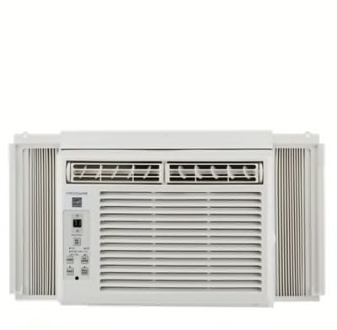
Window Air Conditioners
Small: Capacity ranges from 5,000 to 6,500 Btu, and these units cool roughly 100 to 250 square feet. They’re the smallest, lightest, and least expensive units, but they can’t adequately cool a room measuring more than 300 square feet.
Cost: $150 to $350 and up.
Medium: Capacity ranges from 7,000 to 8,200 Btu, and these models cool roughly 250 to 350 square feet. Prices start creeping up, and their size and weight can make them more difficult to install and remove for winter storage.
Cost: $250 to $450 and up.
Large: Capacity ranges from 9,800 to 12,500 Btu, and these units cool between 350 and 550 square feet. They’re best for cooling a large room, but the bulk and weight make these models awkward and difficult to install.
Cost: $350 to $600 and up.
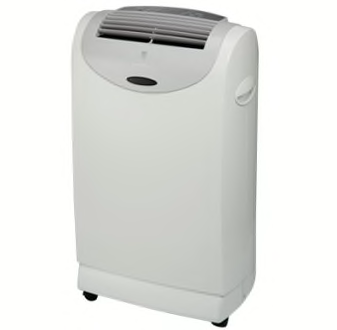
Portable Air Conditioners
Portable models are intended for homes in which window configurations or building regulations prevent installation of conventional window units. The portable air conditioners in our tests range from 9,000 to 15,500 Btu. But don’t compare portable and window air conditioners by that measurement alone.
Our latest air conditioner tests have found that portables aren’t nearly as good at cooling as manufacturers claim. Plus, they’re pricey and use more energy than similarly sized window units. Because all the mechanicals are sitting in the room, they tend to be noisier than window-mounted units, as well. Finally, “portable” is a misnomer because their 50- to 80-pound weight can make them cumbersome and ungainly to roll across carpets or thresholds.
Cost: $350 to $800.
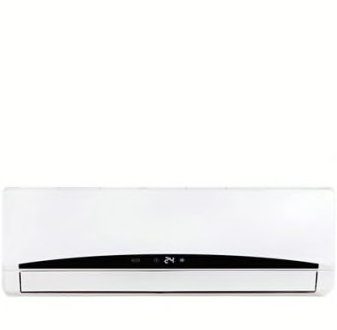
Split Ductless Air Conditioners
A split ductless system is a smart way to add air conditioning to a limited number of rooms without having to open up walls to install ductwork—as you would with a central-air system—or install and remove multiple window units each year. We are currently evaluating a number of ductless models in our labs. In our past tests, they all did an excellent job cooling and were much quieter indoors and out than window air conditioners.
A split ductless system is pricier than window or portable units (and professional installation is recommended), but less expensive than central air if you are cooling only a few rooms. If you’re looking to cool most of your home, a central air-conditioning system is probably the more cost-effective choice.
Cost: $1,000 and up.
Video Buying Guide
For more information, watch our buying guide below.
Smart Features to Help You Chill Out
Many of the units in our air conditioner ratings do a good job of cooling. Highly rated air conditioners may come with convenient features such as digital displays, built-in timers, and remote controls. Some units have touchpad controls, and a few change the direction of the airflow automatically to disperse cool air throughout the room better.
- 1
- / 7
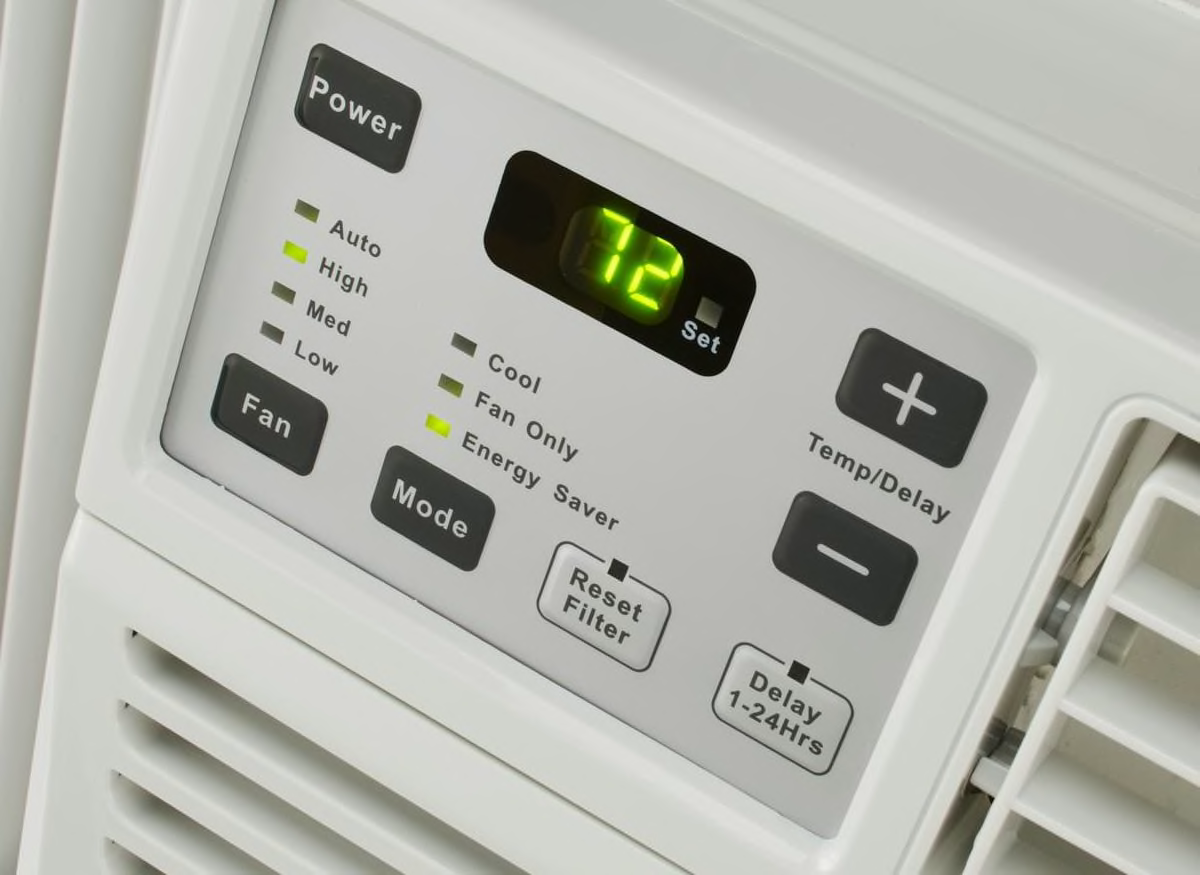
Easy-to-Use Controls
Touchpads with large LED displays, sizable and uncrowded buttons, clear labeling, and digital temperature readouts tend to be easier to use. Poorly designed controls are a constant annoyance. Raised buttons with different shapes let you identify functions by feel. And digital temperature readouts provide a more precise reading than the simple “warmer” and “cooler” settings.
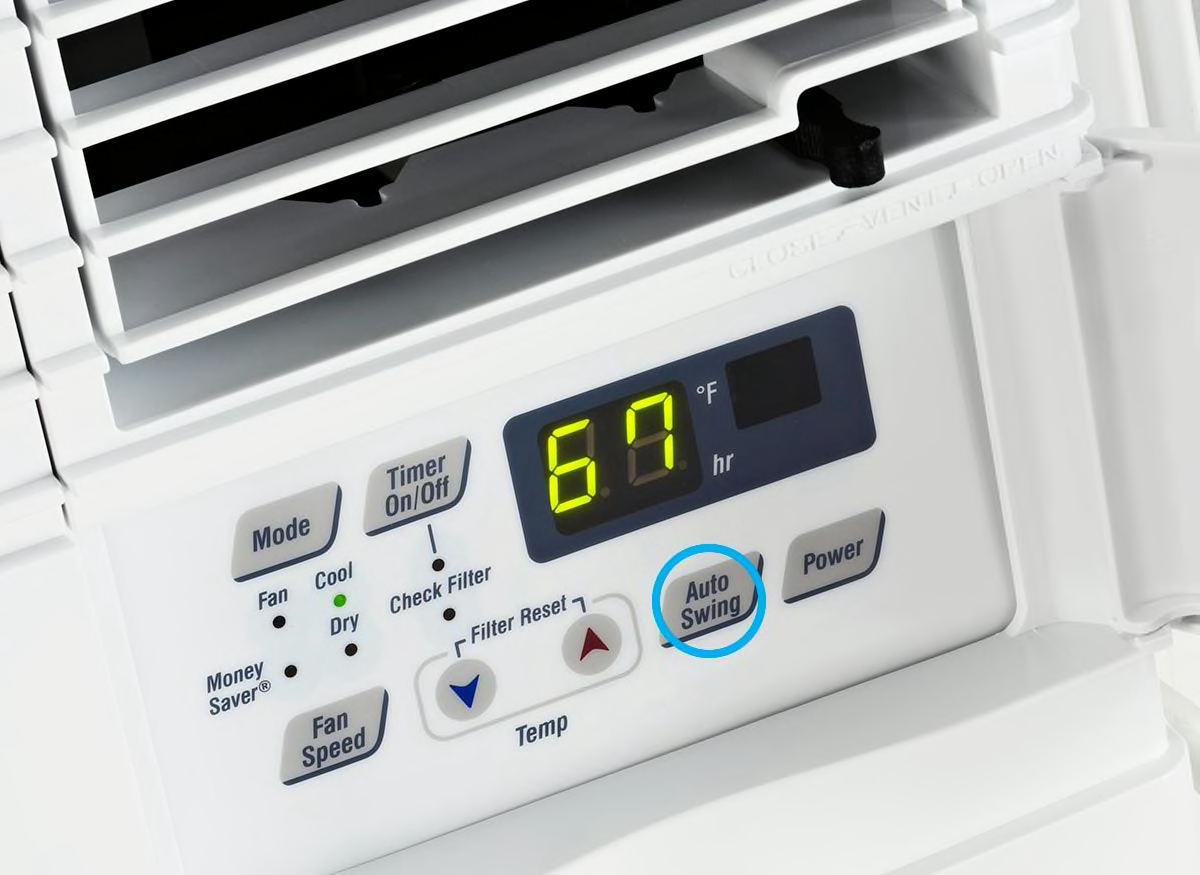
Directional Airflow Vents
Air conditioners have louvers you can adjust to direct airflow vertically or horizontally. Some have fans that oscillate. But most are better at directing air toward one side or the other. Consider your room layout, and look for a model that can direct the airflow toward the center of the room where you need it most and away from a nearby wall or window.
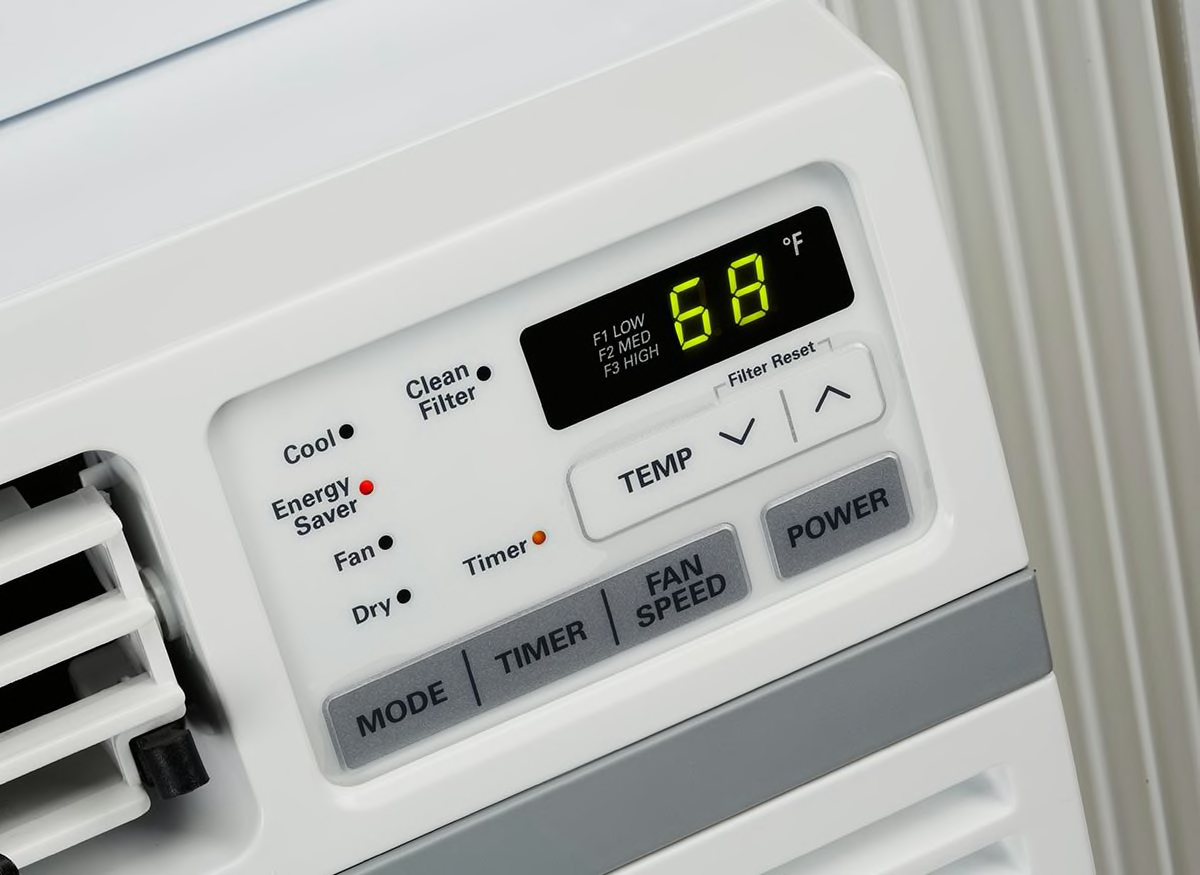
Efficiency Aids
An air conditioner with a timer can be turned off when you’re out or set to turn on just before you expect to get home. An energy-saver setting stops the fan when the compressor is off. These features save electricity.
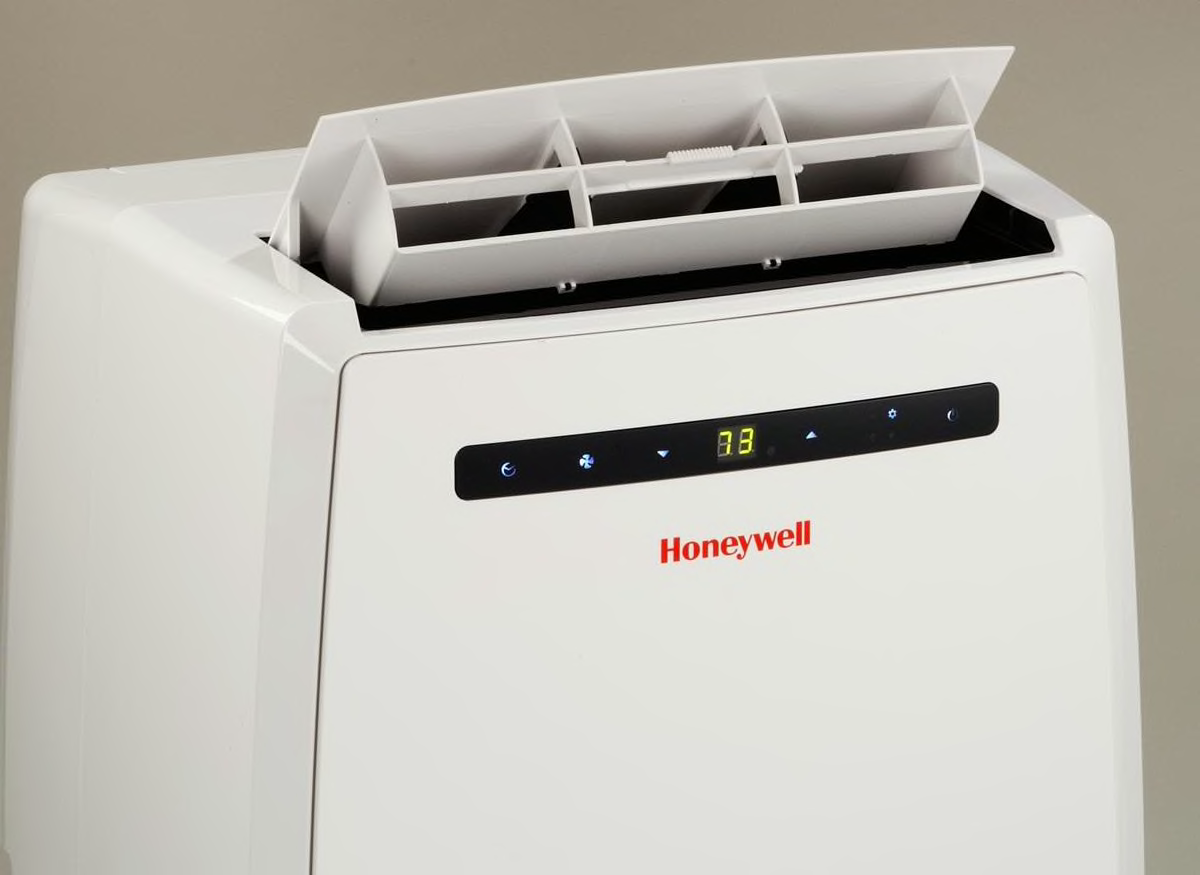
Dehumidifying Mode
This feature is useful on humid but cool days in spring and fall.
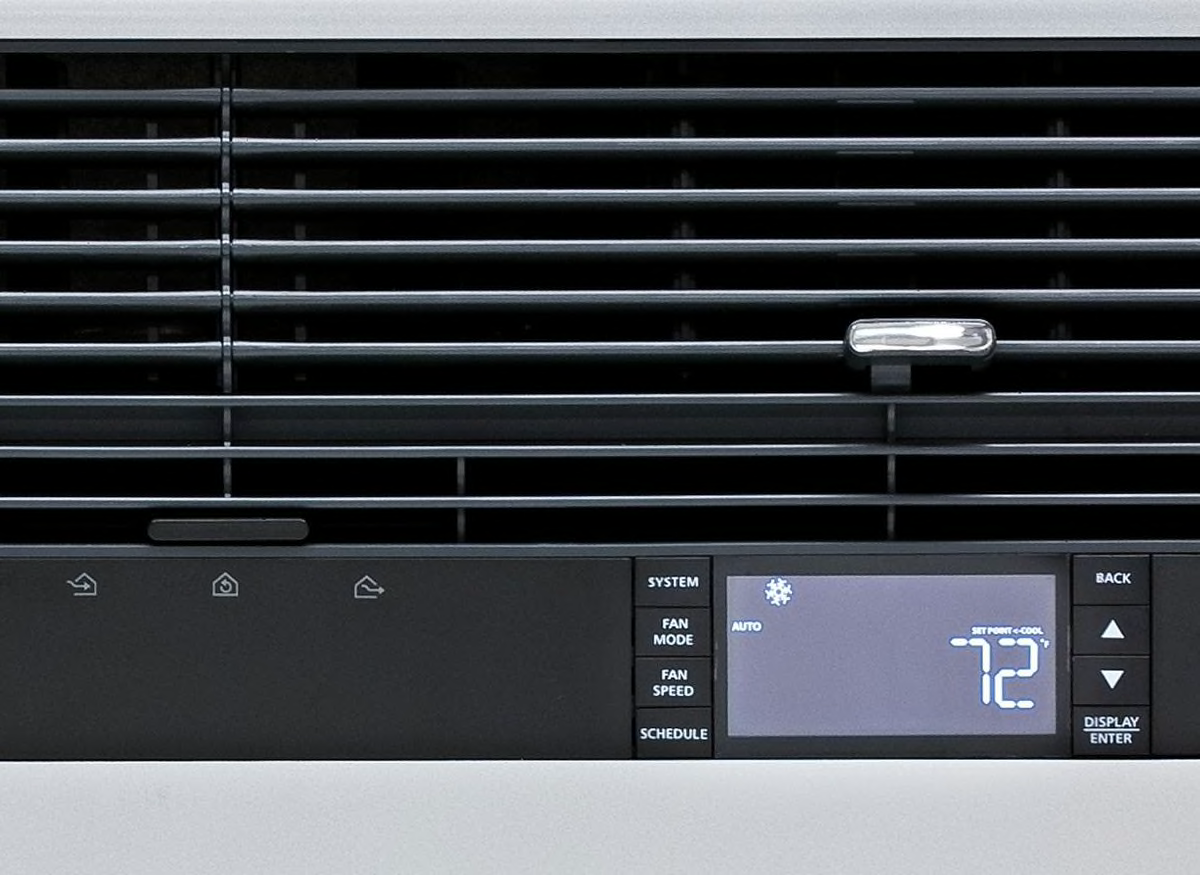
Fresh-Air Intake or Exhaust Setting
This feature provides ventilation without cooling.
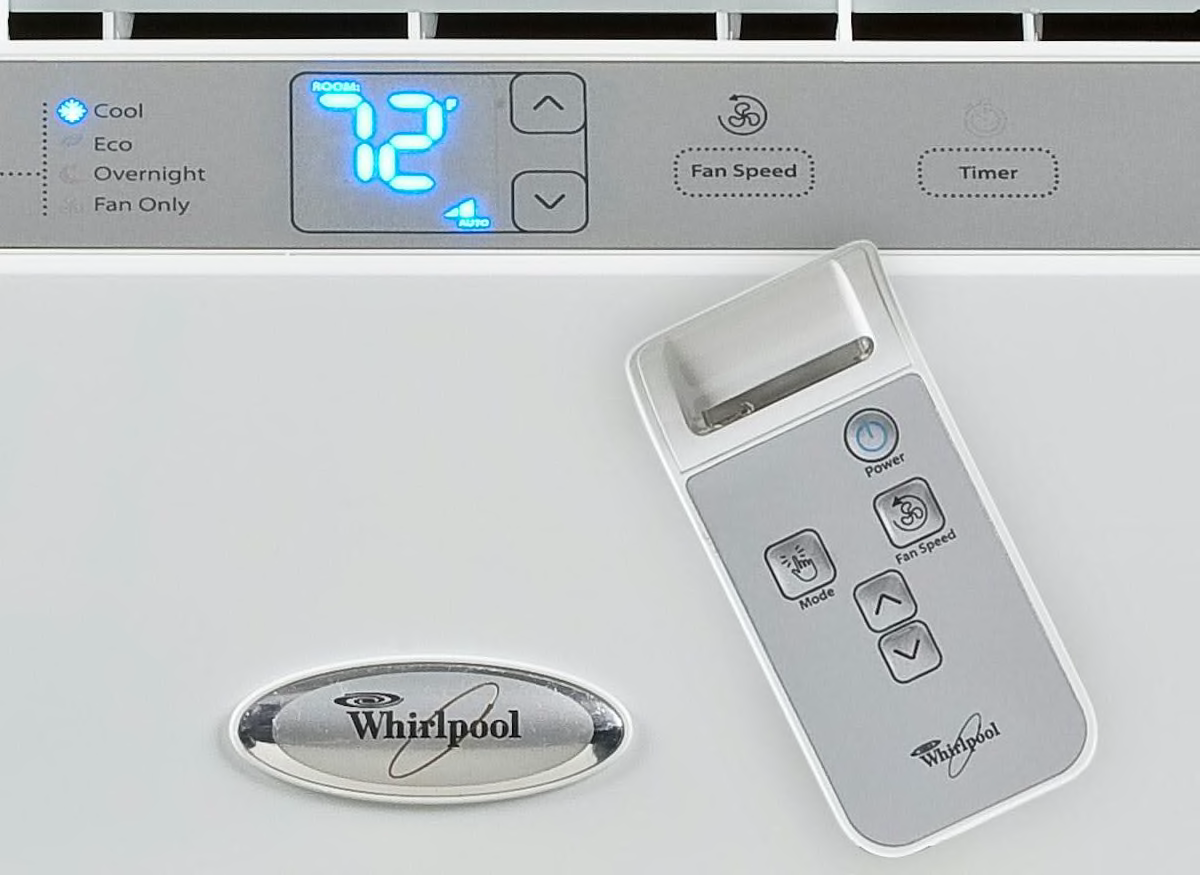
Programmable Timer
One common energy-saving feature is a 24-hour programmable timer, which allows you to customize your unit’s operating schedule.
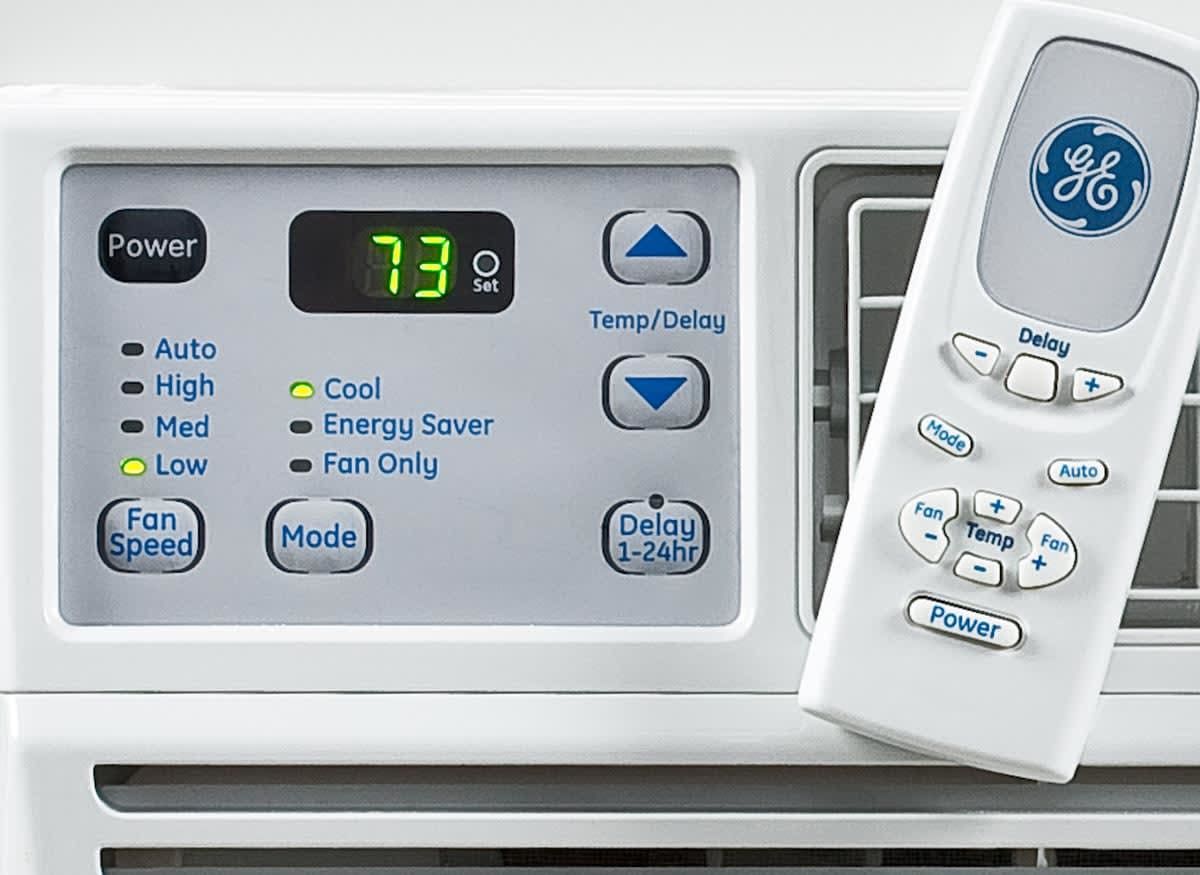
Remote Control
A remote control allows you to adjust the settings from wherever you’re sitting. Some units have built-in temperature sensors to relay the room’s temperature (as opposed to the temperature at the unit itself).
Easy-to-Use Controls
Touchpads with large LED displays, sizable and uncrowded buttons, clear labeling, and digital temperature readouts tend to be easier to use. Poorly designed controls are a constant annoyance. Raised buttons with different shapes let you identify functions by feel. And digital temperature readouts provide a more precise reading than the simple “warmer” and “cooler” settings.
Directional Airflow Vents
Air conditioners have louvers you can adjust to direct airflow vertically or horizontally. Some have fans that oscillate. But most are better at directing air toward one side or the other. Consider your room layout, and look for a model that can direct the airflow toward the center of the room where you need it most and away from a nearby wall or window.
Efficiency Aids
An air conditioner with a timer can be turned off when you’re out or set to turn on just before you expect to get home. An energy-saver setting stops the fan when the compressor is off. These features save electricity.
Dehumidifying Mode
This feature is useful on humid but cool days in spring and fall.
Fresh-Air Intake or Exhaust Setting
This feature provides ventilation without cooling.
Programmable Timer
One common energy-saving feature is a 24-hour programmable timer, which allows you to customize your unit’s operating schedule.
Remote Control
A remote control allows you to adjust the settings from wherever you’re sitting. Some units have built-in temperature sensors to relay the room’s temperature (as opposed to the temperature at the unit itself).
Brands
All of the brands below make window air conditioners that are Energy Star certified.



























